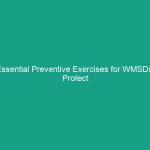Introduction
Good morning team,
Today, we’re going to dive into an essential topic that impacts our health and Safety on the job: Exhaust Ventilation Systems. Understanding how to manage fumes and vapors effectively is not just about complying with Regulations; it’s about creating a safer workplace for all of us. Proper ventilation plays a crucial role in our daily operations, and today, we’ll explore why it’s so important and how we can implement Best Practices.
Understanding Exhaust Ventilation Systems
Exhaust ventilation systems are systems designed to remove or filter out harmful fumes, vapors, and airborne contaminants from the workplace. These systems are essential in controlling exposure to hazardous substances, ensuring that the air we breathe is as clean as possible. Many employees may think that ventilation is just about comfort, but it’s much more than that—it’s a critical Safety measure.
Some common misconceptions include thinking that simply opening a window or using a fan is enough. While these methods can help, they often do not provide adequate protection against harmful substances. Effective exhaust systems are engineered to ensure that contaminants are properly removed, which is vital for our health.
Key Hazards, Risks, and Safety Considerations
When discussing exhaust ventilation systems, it’s important to recognize the specific Hazards associated with inadequate ventilation. Common risks include:
- Exposure to Toxic Fumes: Many industrial environments involve chemicals that can be harmful if inhaled.
- Increased Absenteeism: Poor air quality can lead to respiratory issues, fatigue, and other health problems, which can increase sick days.
- Accidents and Injuries: Insufficient ventilation can lead to a buildup of flammable vapors, creating a fire hazard.
Real-world consequences of ignoring these safety protocols can be severe, including long-term health issues and even fatal accidents. We must stay vigilant and proactive in addressing these risks.
Best Practices, Procedures, & Actionable Advice
Now, let’s discuss Best Practices for maintaining effective exhaust ventilation systems:
- Regular Maintenance: Ensure that exhaust systems are regularly inspected and maintained. Clogged filters or malfunctioning fans can significantly reduce effectiveness.
- Proper Installation: Ensure that the system is installed according to manufacturer specifications and local regulations. A poorly installed system can lead to inefficiencies.
- Use of Personal Protective Equipment (PPE): Always wear appropriate PPE in areas where fumes and vapors may be present, even if ventilation systems are operational.
Consider a recent incident in our facility where a malfunctioning exhaust fan led to a buildup of chemical vapors. Thanks to our quick response and adherence to safety protocols, we were able to prevent any injuries. This serves as a reminder of why we must prioritize maintenance and monitoring of our ventilation systems.
Regulations, Standards, and Compliance
Compliance with safety regulations is not just a legal obligation; it’s essential for protecting our health. Key regulations include:
- OSHA Standards: Occupational Safety and Health Administration mandates specific ventilation requirements for various industries.
- ISO Standards: International Organization for Standardization provides guidelines for best practices in Workplace Safety.
- Local Regulations: Always stay updated with local laws and regulations regarding air quality and safety practices.
Understanding and adhering to these regulations not only protects you but also enhances the overall safety culture of our workplace.
Employee Engagement & Discussion
Let’s take a moment to discuss this together. What safety challenges have you encountered related to exhaust ventilation systems? Are there areas where you feel we could improve our practices? Your insights are invaluable in helping us create a safer work Environment.
Conclusion & Key Takeaways
In summary, understanding and implementing effective exhaust ventilation systems is crucial for controlling fumes and vapors in our workplace. Remember the importance of:
- Regular maintenance and proper installation of ventilation systems.
- Wearing appropriate PPE when necessary.
- Staying informed about regulations and compliance standards.
Let’s commit to prioritizing our safety and the safety of our colleagues by applying these practices daily. Thank you all for your attention and dedication to maintaining a safe work environment. Together, we can ensure that everyone goes home healthy and safe.


